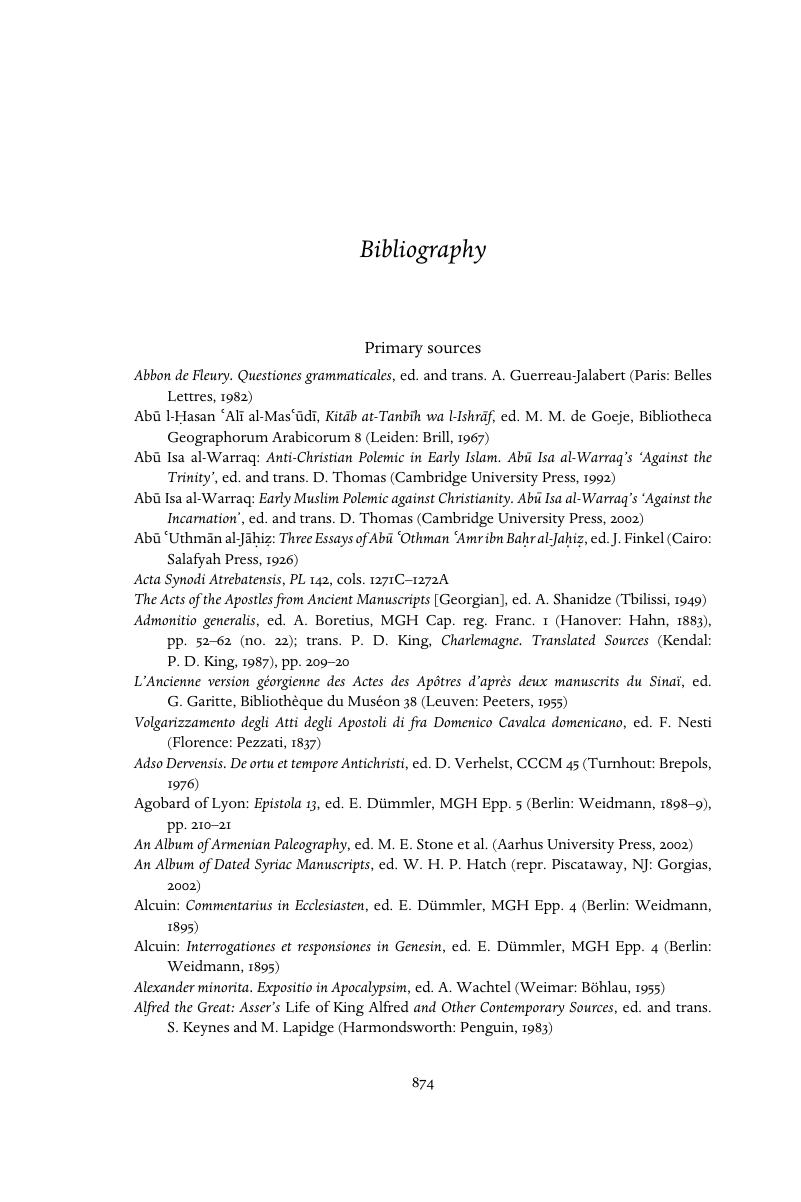Book contents
- Frontmatter
- Contents
- Figures
- Contributors
- Preface
- Abbreviations
- Abbreviations of books of the Bible
- Table of Psalm numbering
- Introduction
- Part I Texts and Versions
- Part II Format and Transmission
- Part III The Bible Interpreted
- Part IV The Bible in Use
- Part V The Bible Transformed
- Bibliography
- Index of biblical manuscripts
- Index of scriptural sources
- General index
- References
Bibliography
Published online by Cambridge University Press: 28 May 2012
- Frontmatter
- Contents
- Figures
- Contributors
- Preface
- Abbreviations
- Abbreviations of books of the Bible
- Table of Psalm numbering
- Introduction
- Part I Texts and Versions
- Part II Format and Transmission
- Part III The Bible Interpreted
- Part IV The Bible in Use
- Part V The Bible Transformed
- Bibliography
- Index of biblical manuscripts
- Index of scriptural sources
- General index
- References
Summary

- Type
- Chapter
- Information
- The New Cambridge History of the Bible , pp. 874 - 983Publisher: Cambridge University PressPrint publication year: 2012

